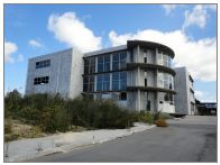
Paços De Ferreira
The city of Paços de Ferreira has long been known as the furniture capital of Portugal. Until the economic crisis this century, 85% of the city’s economy was connected to the manufacture of traditional wooden furniture, through sawmills, factories and showrooms. Up to a decade ago, most of its output was destined for the domestic market. Located in the north of the country, 40km from Porto, with over 55,000 inhabitants, Paços de Ferreira has the advantage of a young population: only 10% of the population are aged over 65. It is close to Porto’s international airport.
When the recession began in 2008, unemployment rose, factories closed and many of the city’s spacious furniture showrooms no longer had a purpose. They closed one by one, leaving desolate empty buildings and social decay in their wake. Although some of its businesses were priced out by ‘the Ikea phenomenon’, Paços de Ferreira has embraced the Swedish giant. Now Ikea has opened its main production centre in southern Europe in the town—the second biggest furniture factory in the world—employing 1,500 people. Not only that but Ikea purchases wood and other raw materials from local companies, further sustaining the economy.
In a bid to diversify, the municipality of Paços de Ferreira has developed a strategic partnership with Porto Polytechnic Institute to turn at least one former showroom into a furniture design centre for the university, including training rooms, labs and a public library. It has also developed two business parks: Technology City and Business City to attract new employers and investors.
SOME RELATED NETWORKS
Wood Footprint
News
Special Report on Wood Footprint - From Empty Showrooms to Economic Development
News
Reportage - projet Wood Footprint, des showrooms abandonnés au développement économique
News



